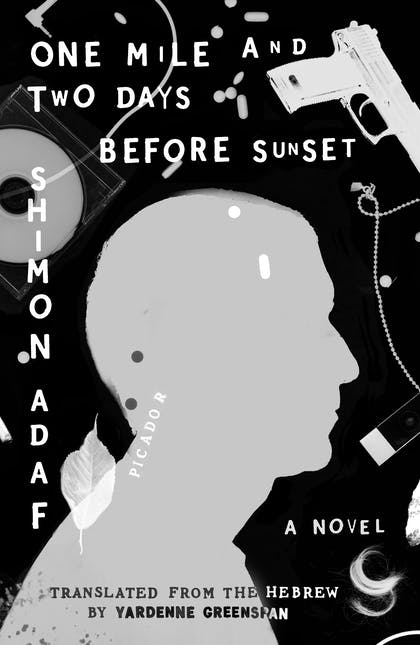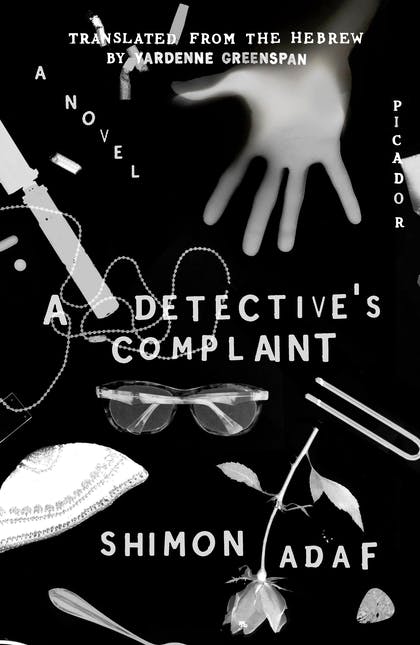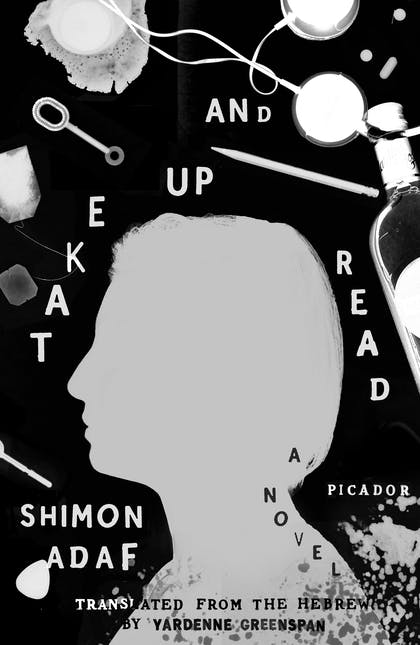


I’ve been reading the absolutely fantastic Lost Detective trilogy by Shimon Adaf and had the chance to ask its talented translator, Yardenne Greenspan, about her thoughts on translation and on Adaf’s work. Enjoy!
I’ve often been asked how I approach translating different genres, tones, or styles of writing, and I’m always stumped. It is not unlike the way I feel, as a writer, when people ask about my writing process. I don’t really have one! I don’t make a neat outline, I don’t have regular writing hours, and I don’t have steadfast rules about how to create. I just start, and see what comes to me. I’ve been watching the Netflix show Get Organized and noticing that the famous home organizers work in a similar fashion—rather than enforce their preconceived systems on another person’s space, they pull out all of the random stuff contained within that space—Tupperware, vintage T-shirts, holiday decorations—and sort through it until an inner logic emerges. Then they can begin to make the necessary connections and translate the mess into a system that makes sense.
Similarly, Matt Bell’s new writing guide, Refuse to be Done, promotes the concept of an exploratory first draft, in which, rather than carrying out a plan laid out in a premade outline, one follows intuition and inspiration to figure out the story as they go along. After a sufficient amount of exploration has been performed, the writer can then take a step back, look at what they have produced, and start shaping, rewriting, cutting, and adding.
The work of a translator is, of course, not quite as shrouded with mystery. The idea has already seeded and sprouted, the words already on the page. But the concept of learning the work while doing the work applies. My way to figure out how to translate a piece of writing is simply to start translating it. The rough draft will be, well, rough, but the beginning of it will certainly be the roughest part. As I go about putting words on the page, I will learn from the author’s work, as well as my own. I will begin to notice word choices, tone, sentence structure. I will observe the author’s unique use of punctuation, the originality of their similes, how much they rely on localized cultural touchstones or on slang.
When translating The Lost Detective trilogy, by Shimon Adaf, there were several specific elements to take into account. Shimon is first and foremost a poet, and poetic language is the central tool he uses in the building of his worlds. By utilizing distinct phrases, inventing unpredictable metaphors, and twisting up nouns into verbs, he is able to render any place, person, or situation fantastical. Sentences flip, images fold onto themselves, and a town or scenario familiar to me from my childhood in Israel are suddenly transformed into unheimlich.
Another important element I had to keep in mind is that Shimon has an encyclopedic knowledge of both modern literature and ancient Jewish texts, and that he references and plays with both in his writing. In the trilogy, he bends the genre of the detective novel, as well as science fiction tropes, in order to entice readers and repeatedly subvert their expectations. In any profession, it’s important to be aware of what we don’t know, and—coming from a Jewish secular background and having read very little genre fiction—I became aware very quickly that I had to check every reference and consult with Shimon about his sources to make sure I got it right.
But what I lack in specific literary knowledge I make up for in attention to detail. I often work from the heart, relying on what a piece of writing makes me feel. My favorite aspect of The Lost Detective trilogy is the atmosphere it creates—a sensation of bone-deep melancholy; a recognition of a hidden structure somewhere beneath the surface, deeming the world and the people in it simultaneously connected and utterly alone. The physical experience of being in the space of these books is delicious, and sustained me over the several years’ process of translating, revising, and editing them. These powerful impressions helped me come up with my own set of references—be they lingual or visual, literary of cinematic. I shared these with Shimon, and he often confirmed the connections I made. I recognized this tone and atmosphere on an interior level, and relied on my understanding of them heavily, using them as a way into the book, as an organizing principle, and as a lens with which to focus, categorize, and prioritize my translation.
